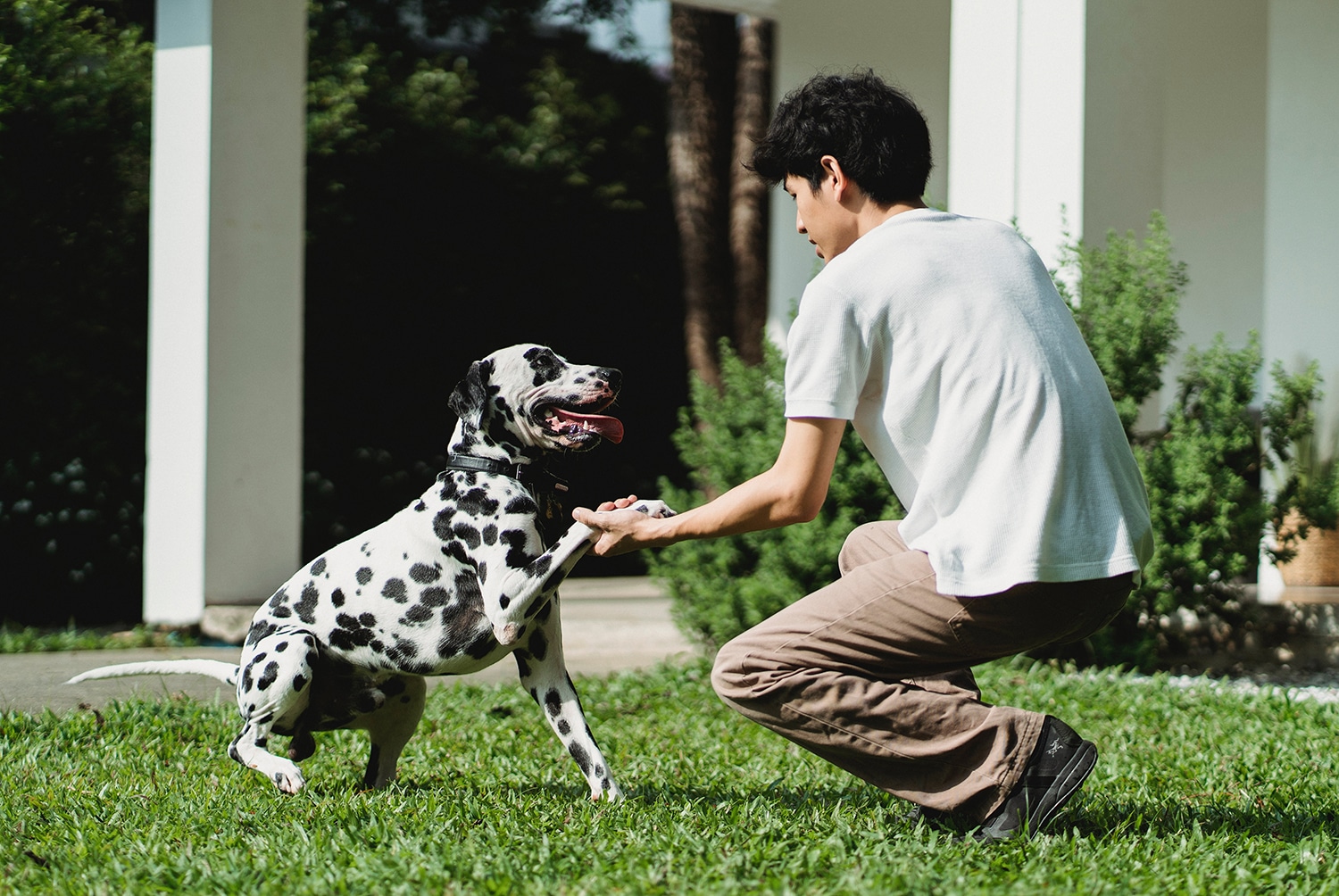Whether you have a puppy or an older rescue dog, your pet likely needs some training. Figuring out where to start with training can be stressful, but it’s both important and rewarding to properly guide your pet to perform desirable behaviors. This blog touches on some common training techniques and scenarios to help you begin your training journey.
Positive Reinforcement Training
Positive reinforcement training is undoubtedly more effective than negative reinforcement training (also known as “corrective” reinforcement training). This is because positive reinforcement focuses on rewarding your pet for good behavior and establishing an association between good behavior and positive consequences.
Rewards, especially in the beginning stages of training, usually mean treats – though there are other ways you can “reward” your pet for positive behavior. Giving them pets, attention and positive verbal praise with a pleasant, happy tone are other examples of ways you may be rewarding your pet, whether you realize it or not.
It’s important to be consistent with rewards and not to accidentally reward unwanted behavior. If you want your pet to stop jumping up for attention, for example, don’t reward your dog with pets and attention when they perform the undesirable action. It’s neither fun nor easy, but it’s important to fight the urge and instead train them that the reward of attention doesn’t happen until they have settled down (the behavior you want them to execute).
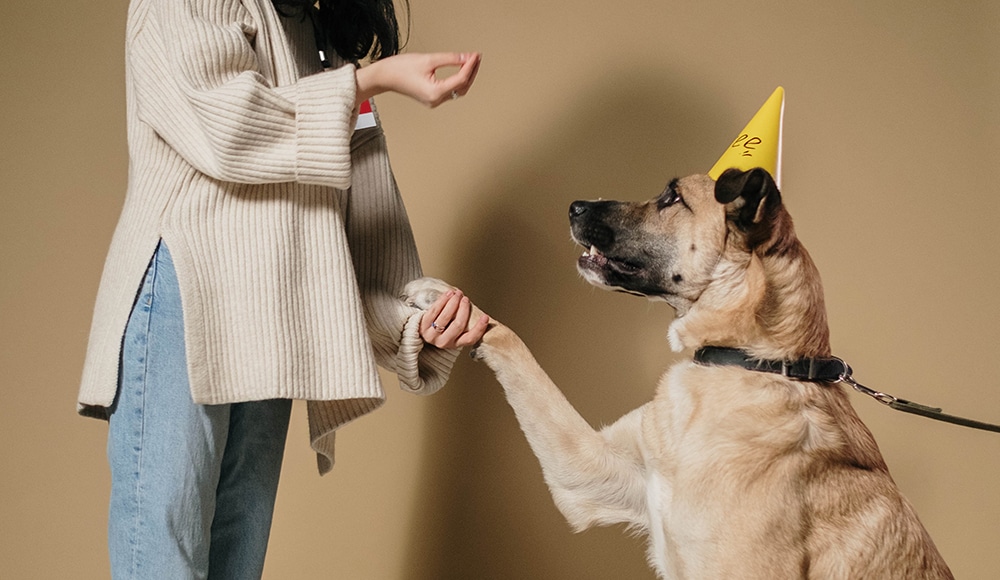
Negative Reinforcement Training
Negative or corrective training also has its place. This is when training is performed by punishing a pet for bad behavior.
Some types of corrective training include the use of shock collars (typically for barking or walking), prong or choke collars, spraying with water bottles as punishment, forcing pets’ noses in messes to show them “what they did wrong”, and many others. Some of these are for safety purposes while others simply do nothing but confuse your dog.
The intention of this blog is not to discourage all forms of corrective training but instead to offer other options to try first. Some dogs need some sort of correction before they will offer positive action.
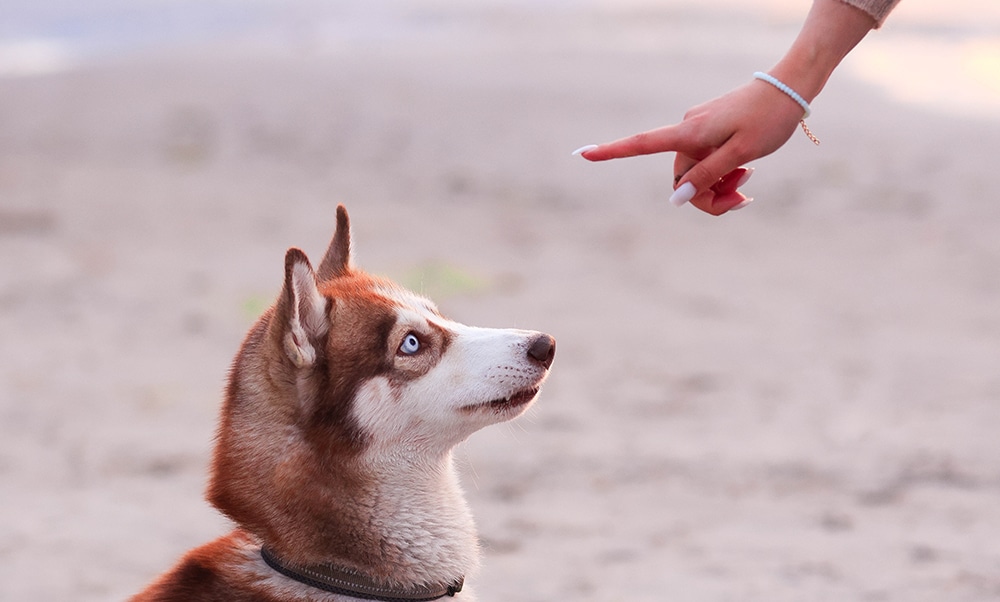
Training Adult Dogs vs Puppies
The old adage “You can’t teach an old dog new tricks” has been proven to be untrue. It is very possible to teach an old dog, and the best way to do it is with positive reinforcement training.
If you rescue a dog, you likely don’t understand much of its background. It’s impossible to know what kind of reaction they’ve received for certain actions, and it can be a challenging task to correct or change their learned behaviors. If you’re finding it difficult to train a senior dog, your best option may be to find an animal behaviorist near you or one available via Zoom to help.
Puppies are luckily much easier to work with. Depending on the breed, most dogs want to please their owners. Just being happy, clapping and saying, “Yay!” is enough for many puppies. Have you ever noticed your puppy getting really excited if you do? It’s because they just want to make you happy!
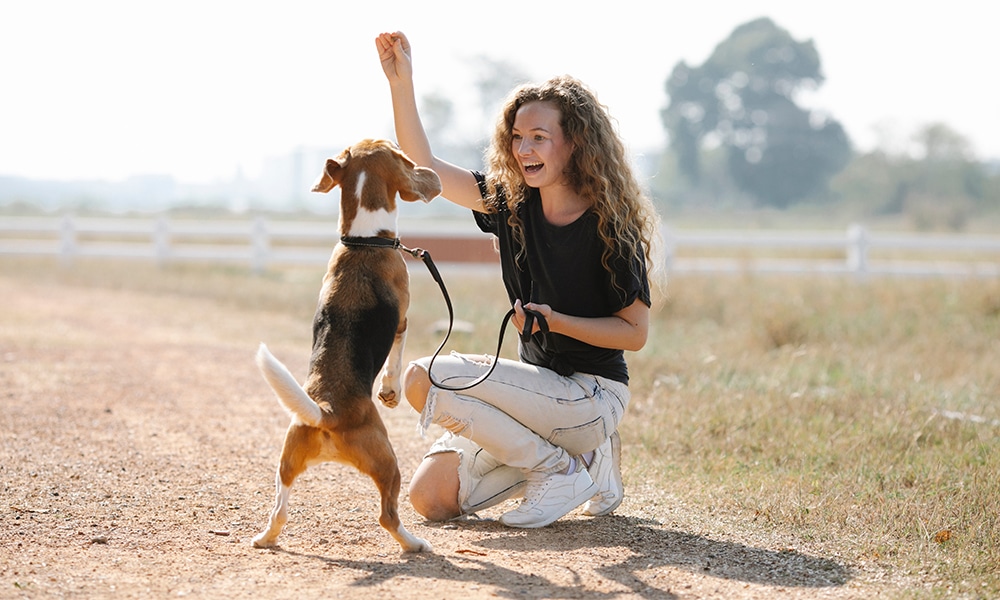
Dog Training and Consistency
It’s incredibly important that all members of your household work together in training efforts. Everyone should be consistent regarding which actions lead to praise or punishment, and each should strive to reliably utilize the same techniques.
Using a similar tone of voice when giving a command is helpful, for example. Ensuring that every member of the house discourages a pet from getting onto the couch, is another example. If one person allows the behavior but others do not, this leads to confusion.
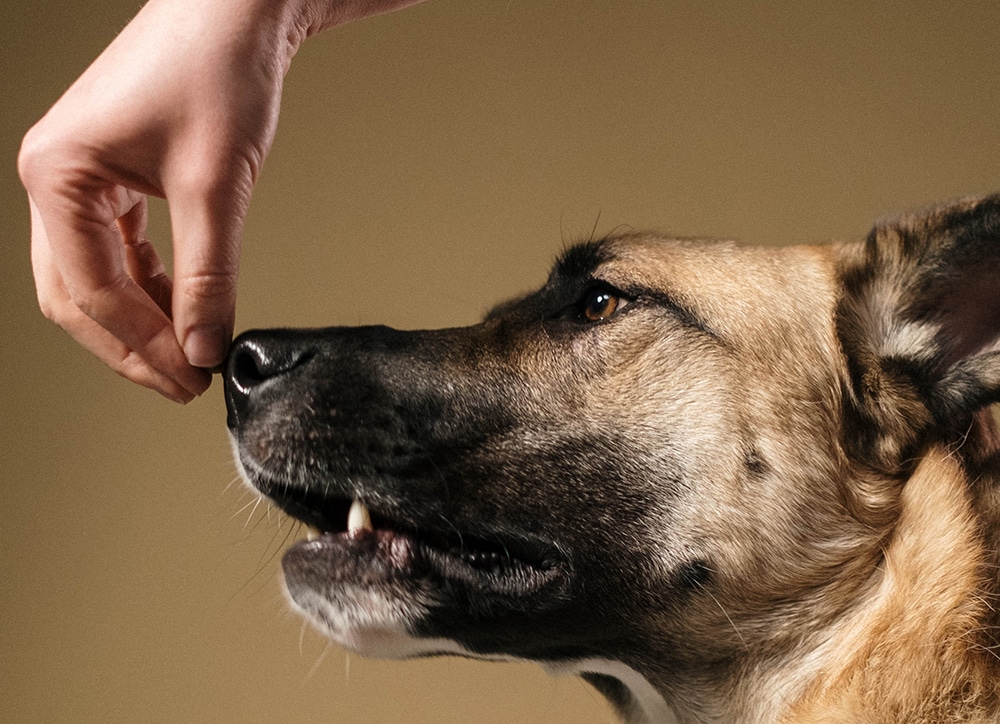
General Dog Training Tips
Keep your training sessions short. Dogs retain information best in short spurts, so keeping dog training sessions to five minutes or less is most effective so your pet doesn’t lose interest or attention.
In the beginning stages, encourage and reward your pet’s progress toward good behavior. Encouraging baby steps and little wins helps your dog associate positivity with their behavior and can help them to complete the task. You don’t expect a baby to get up and walk perfectly the first time they try, right? The same concept can apply to dogs.
Utilize hand signals. Dogs respond better to visual signals than verbal commands, so utilizing both verbal and nonverbal communication when training dogs commands like “roll over” and “sit” can help a dog better understand the command being asked of them.
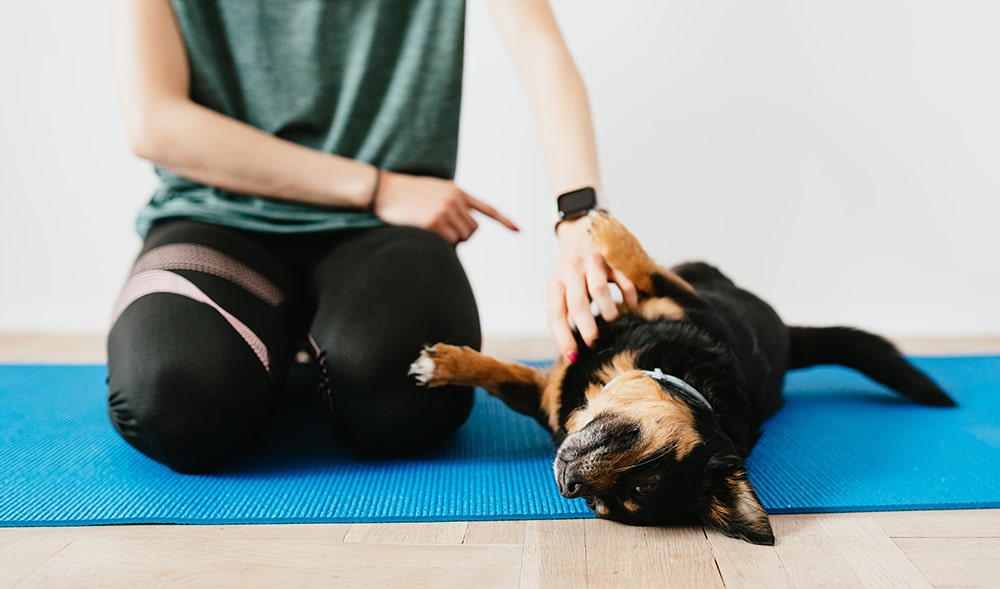
Tips for Potty Training Your Dog
The best way to potty train a dog is to have them outside often and for long periods of time. It can be exhausting to supervise, but every time you catch them in the act, you should praise them and offer a treat. After only a handful of times, they’ll start to understand and associate going outside with treats.
Dogs sometimes associate treats with being outside before they associate them with going potty. It’s ok to let your dog out every time they ask, as it’s good for them to go outside and play anyway. If you continue to praise them every time they potty outside, it won’t take long for them to associate going potty as the positive behavior. Remember, your dog wants to please you, so make it fun for them!
On the flip side: when your pet does have an accident in the house, you must catch them in the act in order for them to know or understand why you are upset. Rubbing a dog’s nose in their mess after they’ve done it does nothing other than confuse them.
Some correction is ok if caught in the act. A stern “NO” and putting them directly outside is all that is needed. Remember, a puppy is like a toddler. They don’t have the ability to remember for long periods of time.
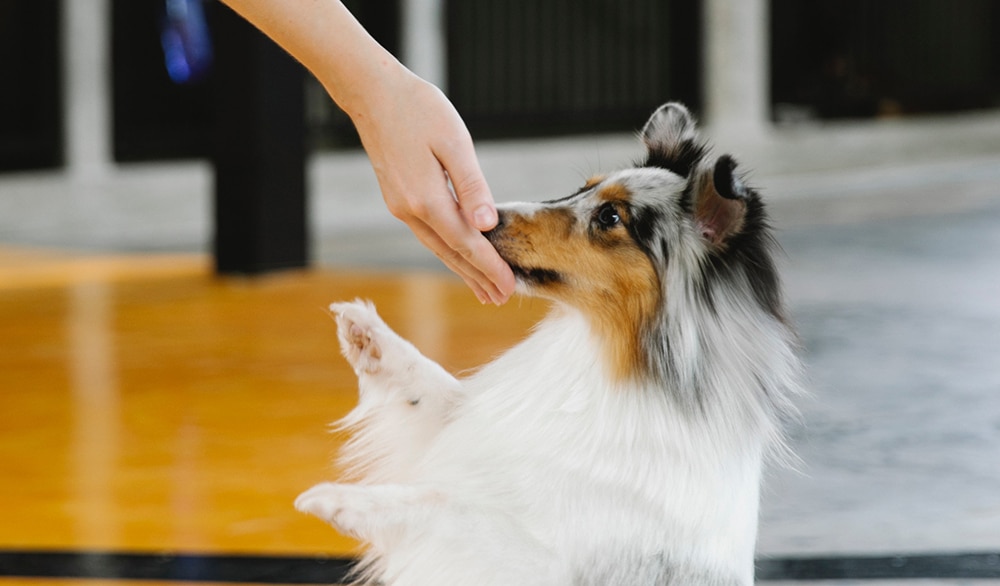
Leash Training
There are many schools of thought on leash training. There are many different types of collars, harnesses and other corrective devices such as shock collars that are intended for leash training.
Leash training can be a positive experience, but it can also be very extremely stressful, especially if you have a large dog. Pack lots of training treats! You can use a training pouch or fanny pack to make them more easily accessible. The Wilderdog Utility Pack is one of many great options for walking.
- Begin by walking with your handle loaded with treats.
- Start walking. While your pet is next to you, say “yes” and offer a treat.
- Don’t forget to talk to your pet while you’re walking.
- If your pet starts to pull, stop and wait for your pet to return its attention to you. Once it has returned its attention to you, start walking and offering treats again.
- As you continue, your pet will associate the treats with walking next to you.
If you are just starting out, taking a training course at your local training facility is best. It is great for socialization and consistency for your pet. It can also help you understand the different types of collars and leashes available to assist with training.
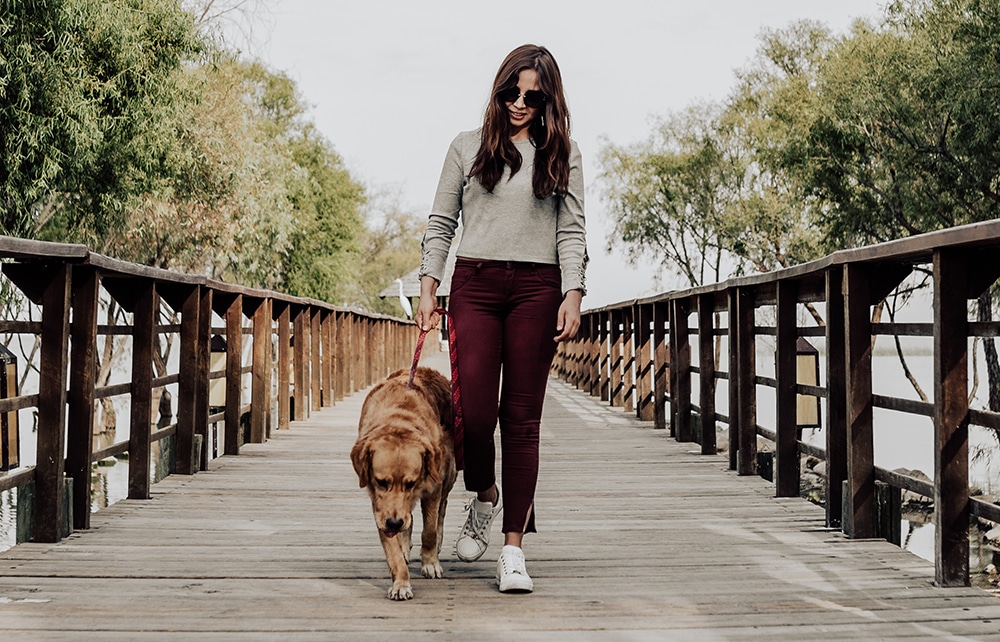
Crate Training
Training your dog to be content in a crate or kennel is extremely important, as dogs need a “safe space”. There is more than one reason to train your puppy or dog to use a kennel, but the most important one is safety. In the event your pet gets injured or needs surgery, you want your pet to feel safe in their crate during the healing process, not stressed out during the traumatic time.
Your pet will also likely be kenneled at your local grooming salon and/or veterinary office. Again, these are places where you want your fur baby to feel as comfortable as possible. Some tips for kennel training your pup are as follows:
- Always leave the kennel open.
- If you witness your pet enter the kennel, offer a treat and say “good dog!”
- Throw pieces of kibble or treats in the kennel, and every time your puppy goes in say “good job!”
- Feed your pet in their kennel.
It is natural for puppies and older dogs to be fearful of crates at first. Just remember, over time most pets love their kennel and need that “safe space” as a retreat.
An important note: It’s recommended not to purposely punish your dog by putting them in a kennel. This action teaches your pet to fear their kennel and no longer works toward encouraging them to associate the kennel with safety, security or happiness.
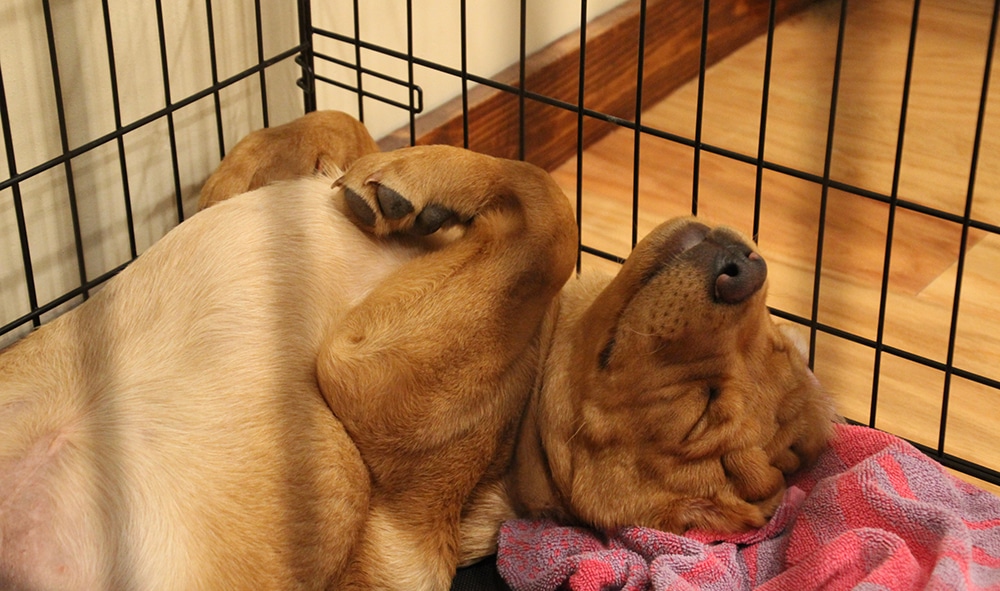
Training
There are several ways to train a dog, and no one way is “the right way”. Find what works for you and your pet. The best way to do that is by getting assistance from a professional pet trainer or animal behaviorist. Your local dog groomer can help with suggestions and maybe even point you in the direction of a reputable trainer.


